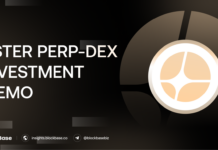The rapid evolution of Web3 has been a remarkable journey filled with unexpected turns. From Bitcoin’s early days to Ethereum’s transformative impact, followed by the rise of DeFi and NFTs, blockchain technology has consistently driven innovation. However, the decentralized nature of Web3, long hailed as its greatest strength, has also created challenges, particularly in the form of complexity. The blockchain industry is now marked by the fragmentation of independent networks, dApps, and crypto projects, creating a disjointed ecosystem that presents barriers for both seasoned users and newcomers.
1. Information Silos on Web3: A Growing Challenge
One of the most significant issues facing the Web3 landscape is the rise of information silos. In traditional centralized systems, data is stored and managed in a single location, making it easily accessible. In contrast, blockchain technology distributes data across a network, with each blockchain operating independently and following its own set of rules. This separation has led to the creation of isolated pockets of data, scattered across various platforms and chains, which can be difficult to connect.

For users, this fragmentation manifests as a constant juggling act between multiple platforms and tools. Imagine you’re a trader with assets spread across different blockchains. You might need to consult one platform for token prices, another for analytics, and yet another for updates on specific projects. In addition to managing multiple wallets and interacting with various governance protocols, you’re also tracking fees and tokenomics — all of which are spread across different networks. This overwhelming fragmentation makes it challenging to form a clear picture of the broader Web3 market.
2. The Consequences of Web3 Fragmentation
The fragmentation of data in Web3 has far-reaching implications beyond mere inconvenience. One of the most immediate consequences is the increased barrier to entry for new users. Web3 is already viewed as complex and difficult to navigate, especially for those unfamiliar with crypto. Information silos only heighten this complexity, requiring users to learn and manage a multitude of platforms and systems from the very start.

For more experienced users, fragmentation can lead to missed opportunities. With crucial information scattered across different platforms, it becomes difficult to stay informed about market trends or investment opportunities. Without an easy way to synthesize data from multiple sources, even savvy traders may miss critical chances to capitalize on new projects or market movements.
Moreover, information silos increase users’ exposure to scams. Web3 has a reputation for being a risky space, with frequent reports of hacks and scams. Access to consolidated, reliable information is vital to avoid these risks. However, with data spread across various chains and platforms, it becomes difficult to verify the legitimacy of projects, creating dangerous blind spots in a fast-paced environment.
3. Breaking Down Information Silos
To reduce this fragmentation and complexity, the Web3 ecosystem needs better interoperability. As new blockchain solutions emerge — including L1, L2, and even L3 — users and developers are finding it increasingly difficult to interact across chains. While bridging solutions and chain abstraction have offered some hope, a more robust solution may lie in leveraging AI to break down information silos.
AI has already made significant inroads into various industries, including Web3. In the crypto space, AI is being used for project development, automated trading, and data aggregation. As AI’s capacity to handle large datasets improves, there is potential for it to serve as a tool for unifying the fragmented Web3 ecosystem.
4. AI: A Solution for Web3 Fragmentation?
The potential role of AI in solving Web3’s data fragmentation issue is rooted in its ability to analyze massive amounts of data, known as big data, which would be impossible to process through traditional methods. AI could serve as a nontraditional way to pull together data from disparate blockchains, dApps, and exchanges into a single, cohesive interface. Such an AI-driven interface could not only aggregate data but also provide actionable insights, allowing users to monitor market trends and make informed decisions more easily.
For instance, an AI-powered tool could help traders navigate the complexities of Web3, reducing the risks associated with scams and missed opportunities. By consolidating information from multiple chains, AI could make Web3 more approachable for newcomers, lowering the barrier to entry that a fragmented ecosystem presents.

5. The Need for Caution
While AI offers promising potential for addressing Web3’s fragmentation, it is important to approach these developments with caution. Despite AI’s impressive capabilities, there are notable risks. AI hallucinations — where AI systems generate false or misleading information — have raised concerns, as exemplified by recent incidents involving prominent tech companies. These lapses in AI reliability underscore the need for users to remain skeptical and vigilant.
In Web3, where security and transparency are paramount, it is essential to conduct thorough due diligence (DYOR) and maintain a healthy level of skepticism. While AI-driven solutions may be a game-changer for reducing fragmentation, it is crucial to ensure that these tools are reliable, secure, and free from the risks that have plagued other industries.
6. Conclusion: A More Connected Future for Web3
The future of Web3 depends on its ability to reduce complexity and fragmentation. By embracing emerging technologies like AI, the Web3 ecosystem has the potential to become more connected, user-friendly, and accessible to a broader audience. However, as with any innovation, it’s essential to balance optimism with caution. AI could be a powerful tool in the effort to break down information silos, but users must approach its adoption with care, ensuring that the benefits outweigh the risks. In doing so, Web3 can move closer to realizing its goal of decentralized technology for everyone.
The information provided in this article is for reference only and should not be taken as investment advice. All investment decisions should be based on thorough research and personal evaluation.





